I always like to organize things. Therefore it is with great pleasure that I am able to organise my picture archive of butterflies into families and subfamilies. I will try to show you the result in a series of 5 blogs about butterflies, family by family. Let’s see which way this goes…
The first family to show is the family of the Satyridae or Satyrinae. They are “the browns” amongst the butterflies. They are actually considered a subfamily of the Nymphalidae (such as the Red Admiral and the Peacock). But if we refer to them as the browns, it makes things less complicated. They can quite often be seen near wood edges and grassland. Nettles, tree leaves, thistles, they are all save havens for them.
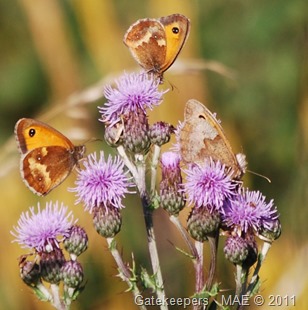 Although it is always a matter of taste, I believe that the most beautiful of this subfamily is without a doubt the Gatekeeper (Pyronia Tithonus). The male has a broader brown edge on it’s very bright orange forewings than the female has.
Although it is always a matter of taste, I believe that the most beautiful of this subfamily is without a doubt the Gatekeeper (Pyronia Tithonus). The male has a broader brown edge on it’s very bright orange forewings than the female has.
Sometimes, this butterfly is called Hedge Brown. The fact that they are indeed often seen on hedges near a forest may be the reason of it’s more common name.
In Dutch it is called Oranje Zandoogje.
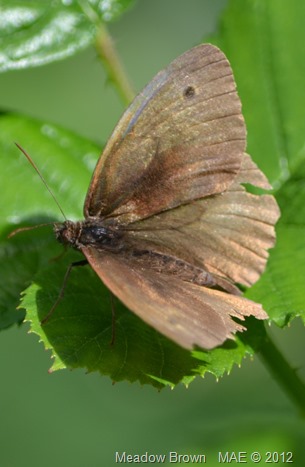 The next of the browns to show, is the Meadow Brown (Maniola Jurtina). This is an almost similar butterfly, albeit their is more brown than orange to be seen. Hence the name. I have not come across a lot of them, but most of the time their wings where somewhat tattered.
The next of the browns to show, is the Meadow Brown (Maniola Jurtina). This is an almost similar butterfly, albeit their is more brown than orange to be seen. Hence the name. I have not come across a lot of them, but most of the time their wings where somewhat tattered.
In Dutch this butterfly is called: Bruin Zandoogje. As you can see, you will find them on leaves near high grassland. Small footpaths near low growth are also likely places to spot them.
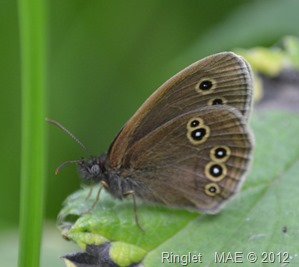 A very brown butterfly of the browns is the Ringlet (Aphantopus Hyperantus). From a distance and in flight, you could easily mistake it for a Meadow Brown. But with it’s wings folded, you see the distinctive and unique black and yellow spots.
A very brown butterfly of the browns is the Ringlet (Aphantopus Hyperantus). From a distance and in flight, you could easily mistake it for a Meadow Brown. But with it’s wings folded, you see the distinctive and unique black and yellow spots.
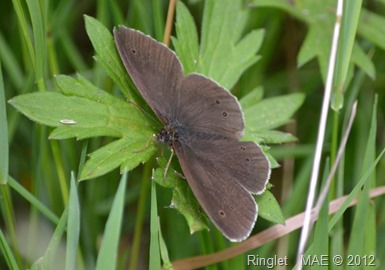 They can be found most of the time on leaves of low growth or in high grass.
They can be found most of the time on leaves of low growth or in high grass.
This butterfly is called Koevinkje in Dutch.
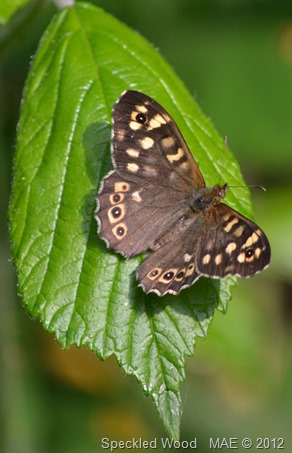 The last of this subfamily in my archive is the Speckled Wood (Pararge Aegeria). Although I have seen many of them in the past, I have only seen one so far this year; that was back in May. I guess I have to look better. They have the most spots of the browns, but is still very brown overall. With their spots, they are very recognizable. The best place to find them is in trees on leaves. They don’t always seem to come as low to the ground as the other browns.
The last of this subfamily in my archive is the Speckled Wood (Pararge Aegeria). Although I have seen many of them in the past, I have only seen one so far this year; that was back in May. I guess I have to look better. They have the most spots of the browns, but is still very brown overall. With their spots, they are very recognizable. The best place to find them is in trees on leaves. They don’t always seem to come as low to the ground as the other browns.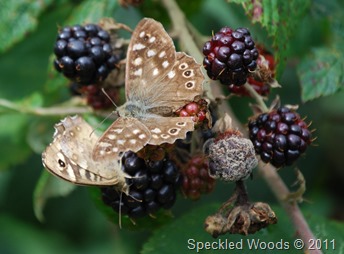
The banner of this blog also shows one of these butterflies.
They are called Bont Zandoogje in Dutch.
I do not have more pictures of other varieties of this subfamily in my archive. Next time I will show pictures of the actual Nymphalidae’s.
To end this blog, I will show another Gatekeeper, just because the colours are so beautiful.
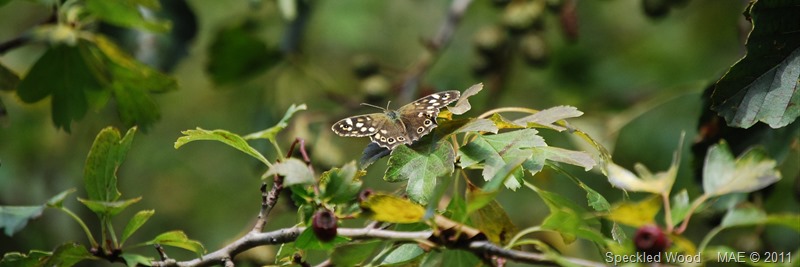
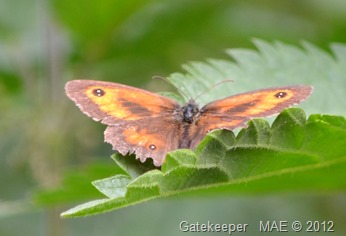
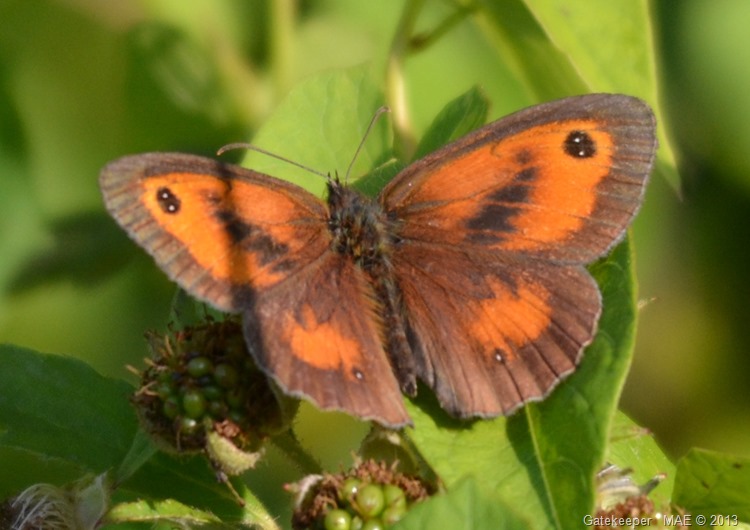
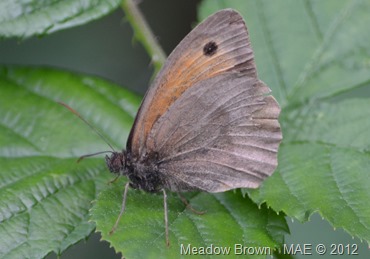
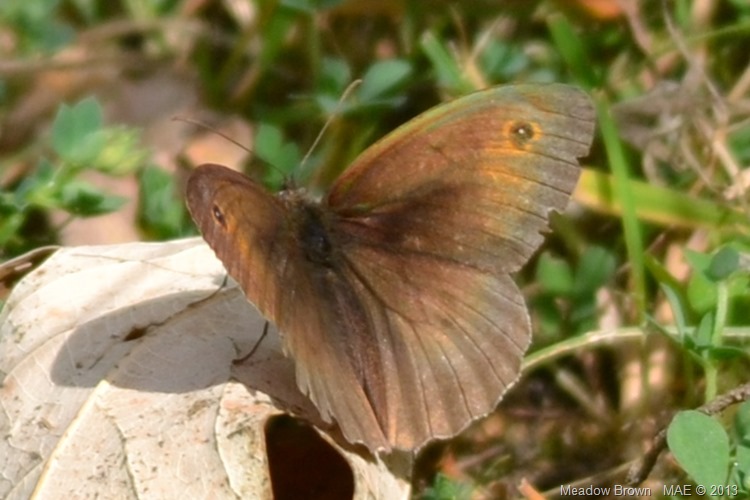
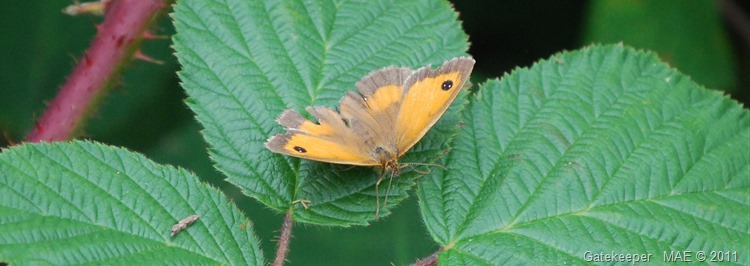
No comments:
Post a Comment